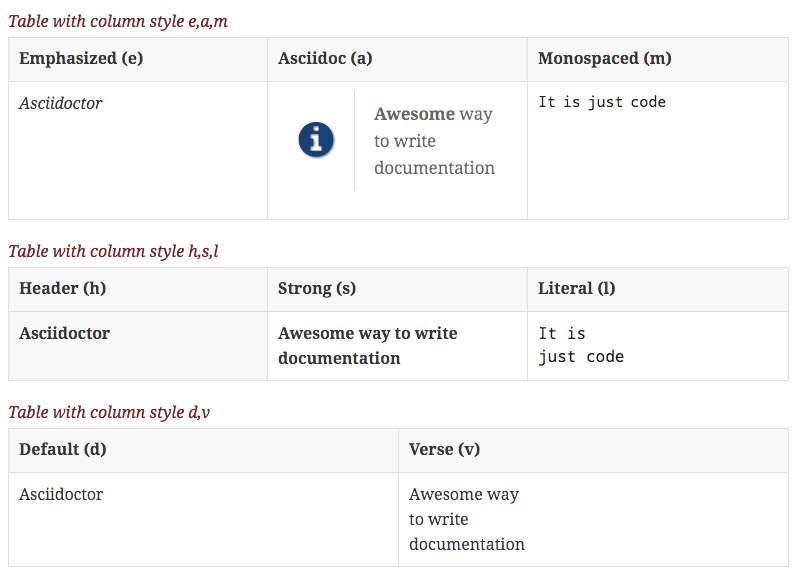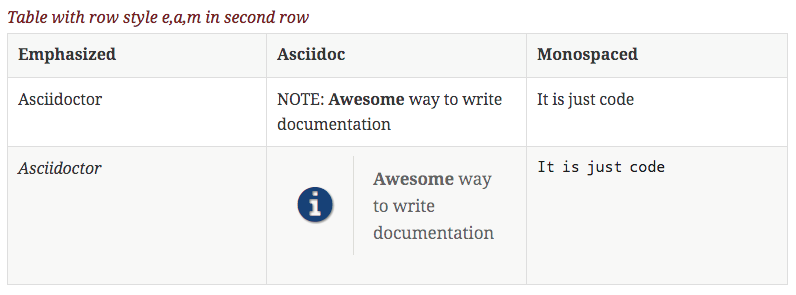Awesome Asciidoctor: Styling Columns and Cells in Tables
In a previous post we learned how to use Asciidoc markup in a table. The a character is just one of many styles we can define in our table. In this blog post we see which style options we have. We can either use the cols attribute to define a style for a whole column or specify per cell the style.
We can use the following styles:
e: emphasizeda: Asciidoc markupm: monospaceh: header style, all column values are styled as headers: strongl: literal, text is shown in monospace font and line breaks are keptd: defaultv: verse, keeps line breaks
The following Asciidoctor source uses the different styles as cols attribute values:
.Table with column style e,a,m
[cols="e,a,m"]
|===
| Emphasized (e) | Asciidoc (a) | Monospaced (m)
| Asciidoctor
| NOTE: *Awesome* way to write documentation
| It is just code
|===
.Table with column style h,s,l
[cols="h,s,l"]
|===
| Header (h) | Strong (s) | Literal (l)
| Asciidoctor
| Awesome way to write documentation
| It is
just code
|===
.Table with column style d,v
[cols="d,v"]
|===
| Default (d) | Verse (v)
| Asciidoctor
| Awesome way
to write
documentation
|===
When we transform this into HTML using the Asciidoctor HTML backend we get the following result:
We can also override a column styling per cell. We must put the correct styling character before the pipe symbol (|), so the contents of the cell is styled differently:
Table with row style e,a,m in second row
|===
| Emphasized | Asciidoc | Monospaced
| Asciidoctor
| NOTE: *Awesome* way to write documentation
| It is just code
e| Asciidoctor
a| NOTE: *Awesome* way to write documentation
m| It is just code
|===
And the following HTML is generated when we process this Asciidoctor source:
Written with Asciidoctor 1.5.1.


